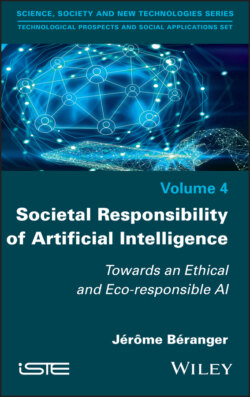Читать книгу Societal Responsibility of Artificial Intelligence - Группа авторов - Страница 12
DEEP LEARNING.–
ОглавлениеThis algorithmic system has been used for more than 20 years for different actions in the form of neural networks, in particular to “learn”. A neuron represents a simple function that takes different inputs and calculates its result, which it sends to different outputs. These neurons are mainly structured and organized in layers. The first layer uses almost raw data and the last layer will generate a result. The more layers there are, the greater the learning and performance capacity will be. One can take the example of character recognition from handwriting. The first layer will take into account all the pixels that make up a written character – for example, a letter or a number – and each neuron will have a few pixels to analyze. The last layer will indicate “it’s a T with a probability of 0.8” or “it’s an I with a probability of 0.3”. A backpropagation operation is performed from the final result to remodify the parameters of each neuron.
The machine is programmed to “learn to learn”. AI does not exist to replace people, but to complement, assist, optimize and extend human capabilities. There are two types of AI:
– weak AI: its objective is to rid people of tedious tasks, using a computer program reproducing a specific behavior. This AI is fast to program, very powerful, but without any possibility of evolution. It is the current AI;
– strong AI: its objective is to build increasingly autonomous systems, or algorithms capable of solving problems. It is the most similar approach to human behavior. This AI learns or adapts very easily. Thanks to algorithmic feedback loops, the machine can modify its internal parameters used to manage the representation of each stratum from the representation of the previous stratum. These strata of functionalities are learned by the machine itself and not by humans. From this postulate, we can say that the machine becomes autonomous and intelligent, by constructing its own “computerization” structures and relying on axiomatic decisions. It is the future AI that should be developed in about 10 years.
